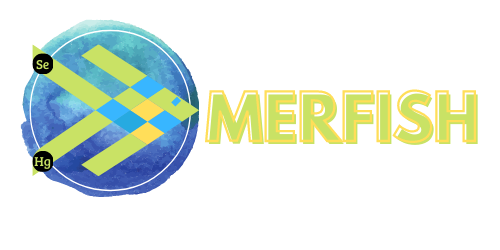THE PROJECT
H2020 MERFISH MSCA RISE
MERFISH brings together international experts from a wide array of interdisciplinary research areas (analytical chemistry, fish nutrition, environmental science, communication, toxicology & aquaculture) from industry and academia from EU, Brazil and Mauritius, with a long-term goal of furthering the understanding of the source, transport, fate and effects of mercury from fish to humans and the detoxification role of selenium. MERFISH surges from a global demand, directly related to mercury, one of the top ten chemicals of major public health concern identified by the World Health Organization. However, mercury metabolic pathways in biota still remain poorly understood. Its understanding is crucial to elucidate its (eco)toxic effect and to identify important drivers of the mercury biogeochemical cycle. Fish and seafood consumption is the principal human exposure source to (toxic) methymercury. EU food safety authorities (such as EFSA), and well-known US and United Nation environmental and food organizations (such as USEPA and FAO) clearly advise about avoiding certain fish species for vulnerable populations (including pregnant women and young children) depending on their methymercury concentrations. Mercury binding with proteins has been identified as a potential cause for toxicity and the role of selenium as antagonist for mercury toxicity has been identified but not well understood. MERFISH is based on the development of novel analytical approaches to gather new knowledge about mercury and selenium mechanisms in fish and humans. The project will be a critical contribution to establishing more realistic scenarios to estimate human health risk and benefits, but also to better capture the economic impacts on commercial fisheries. MERSFISH will build a lasting research network to answer emerging challenges in analytical chemistry, food safety, trophic transfer, fish nutrition and environmental and human health related to the global mercury issue.
THE PROPOSAL
WP1 - Development of analytical techniques for Hg and Se characterization in living organisms
WP2 - Isotopic Niches and Trophic Transfer of Mercury and Selenium in Global Fish
WP3 - Hg and Se interactions in humans.
WP4 - Impact of nutrition on Hg and Se interactions in farmed fish
WP5 - Communication, dissemination and networking.
WP6 - Project management
THE PROBLEM
The global impact of Hg pollution
Hg pollution is unquestionable and certain communities are recognized to be particularly vulnerable and at high risk. The Brazilian Amazon is one of the most Hg impacted regions around the world, due to (illegal) gold mining, where fish and humans (blood levels) reach Hg levels up to 4.5 µg/g and 179 µg/L, respectively
(Berzas 2010, Grotto 2010)
fish consumption
In general, human exposure to MeHg is mainly associated with marine fish consumption (Sunderland and Mason 2007), known to be a good source of Se and omega-3 DHA and EPA also fatty acids.
Aquaculture
The UN Member States implemented the 2030 Agenda for Sustainable Development in order to sets aims for the contribution and conduct of fisheries and aquaculture towards food security and nutrition. The understanding of the fate of Hg and Se in biota, as well as their interaction could contribute to answering these yet unresolved questions of socioeconomic and health interest. It should be considered that the speciation of an element, and not its total concentration, determines its reactivity in the environment and its essentiality or toxicity in living organisms.
